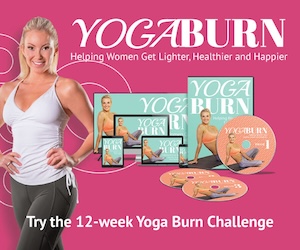The Versatility Of Hatha Yoga:
Hatha Yoga is based on psychophysical exercises and practices. A common aim of this style is for the practitioner to control both the body and mind. Oftentimes, this achievement is a consequence of following sessions involving postures, controlled breathing (pranayama), and focusing the mind.
The beforementioned breathing techniques rely on the practitioners ability to focus on prolonged inhalation, breath retention an exhalation.
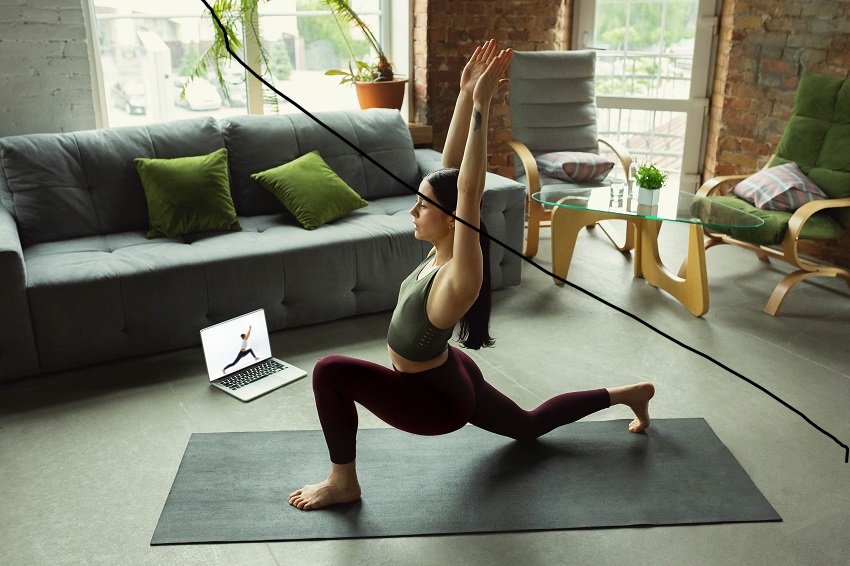
Due to the very nature of yoga and it’s calming properties it has become a popular choice for many as a complementary therapy for specific ailments. For example, symptoms of anxiety, depression, stress, even insomnia. Slow, controlled and rhymical breathing encourages the relaxation response. Thus, a practitioner may see changes in terms of lowering heart rate, blood pressure, cortisol levels, even increased blood flow to organs.
In fact, one study conducted with middle aged women concluded that long term practice of Hatha yoga “provides clear and significant health benefits”. In addition, the study concluded that even one 90-minute session, decreased women’s “perceived stress levels”.
Brief Hatha Yoga History:
Force. This is literally what Hatha means in Sanskrit. Oftentimes, you’ll see Hatha yoga accompanied by a set of physical postures. These are also called asanas or poses. However, asanas along with the breath used together as a way to improve energy, was not until many years later.
In it’s original form, Hatha yoga involved the breath or pranayama. In fact, it was solely focused on the breath and how an individual could control it. The term prana means ‘life force’. Yoga has evolved quite a bit since those days.
For example, today we are encased in an all out explosion of postures. Many of which did not exist until recent years, and seem to still be growing. In fact, in ancient times, the term mudras was significant. Mudras – hand gestures. These “hand gestures” were a way of directing energy channels within the body.
Nevertheless, “modern” world yoga has become more physical, then spiritual it would seem. In addition, breath is just one faucet of the practice a yogi should master. As the practice of yoga became more influencing in different parts of the world, it began to evolve. Picking up certain influences along the way.
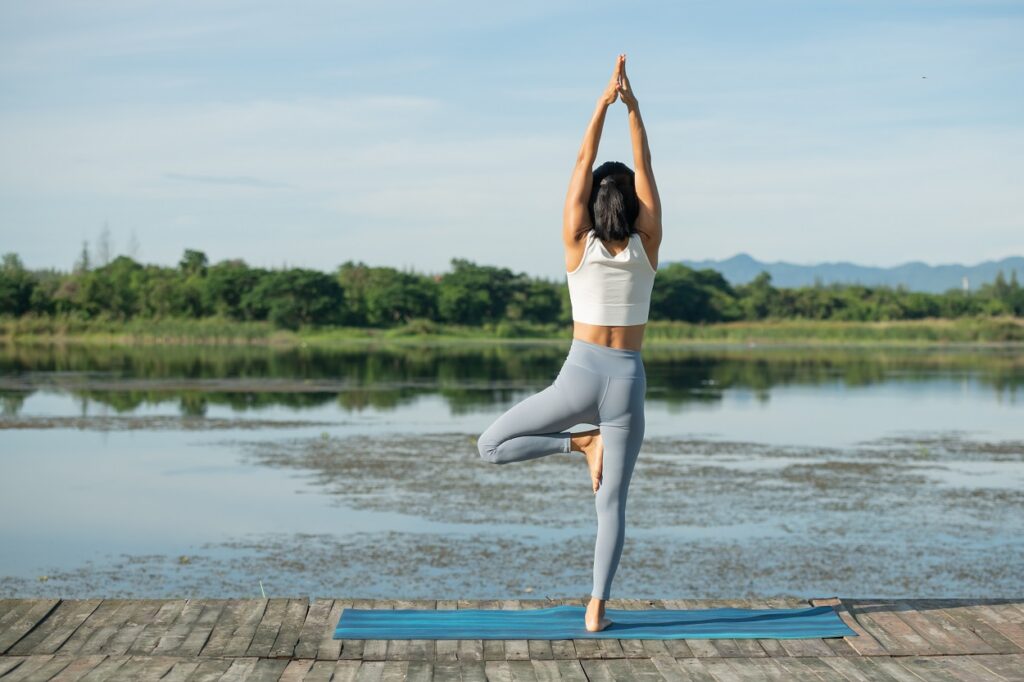
Main Features & Elements:
The positions of hatha yoga are very close to those of traditional yoga, but can be particularly demanding. However, this variant is also often used by beginners, to gradually approach the practice. Hatha yoga allows one to easily learn the basic principles of meditation, breathing, and concentration.
The main characteristics of hatha yoga can be explained through four closely related elements:
- asanas;
- relaxation techniques;
- meditation techniques; and
- breathing techniques.
Asanas:
Asanas are the positions that the body assumes during practice. Literally an asana “is a posture adopted in performing hatha yoga”. In Sanskrit, asana is associated with words such as “posture”, or “pose”. In the modern age, we looked to these asanas as a way of improving balance, strength, and flexibility.
Anyone, at any level, can perform an asana. Some are more advanced, where many are suited for beginners of the practice.
Meditation Techniques:
In many ways meditation is a practice that allows the practitioner to better master there mind. It is a very personal practice. It’s about “training awareness and getting a healthy sense of perspective“. Meditation can be completely spiritual to one practitioner, or can have a completely different purpose to another.
It’s a way of looking within the self, free of judgment, to better understand the self. There are many different forms of meditation. For example;
- Mindfulness
- Spiritual
- Transcendental
Relaxation Techniques:
Another characterizing element of Hatha yoga is represented by relaxation techniques.
The exercises dedicated to this specific phase are represented by movements, accompanied by focused breathing patterns. Consequently, these can exhibit a relaxation type effect on the body.
Breathing Techniques:
Pranayama is the most used breathing technique in Hatha yoga, to which the rhythmic control of the breath is implemented through four phases.
The first is that of inspiration (called “puraka”). Secondly, the phase of a respiratory pause (called “antara kumbhaka”). The third phase is that of exhalation (called “rechaka”). Finally, followed by the respiratory pause (called “bahya kumbhaka”).
Pranayama constitutes the fourth stage of yoga and aims at teaching the practitioner controlled breathing.
Hatha Yoga Asanas:
The following asanas can be routinely found in a Hatha yoga session. These are some of the most common and simple to perform asanas, for yogis at all levels.
As the practitioner masters some of these basic poses, they can move to intermediate or more advanced asanas. Hatha yoga is great for beginners, as it is slower paced (unlike Vinyasa Flow) allowing one to ease into the practice, and understand there bodies limitations.
Bhujangasana (Cobra Pose):
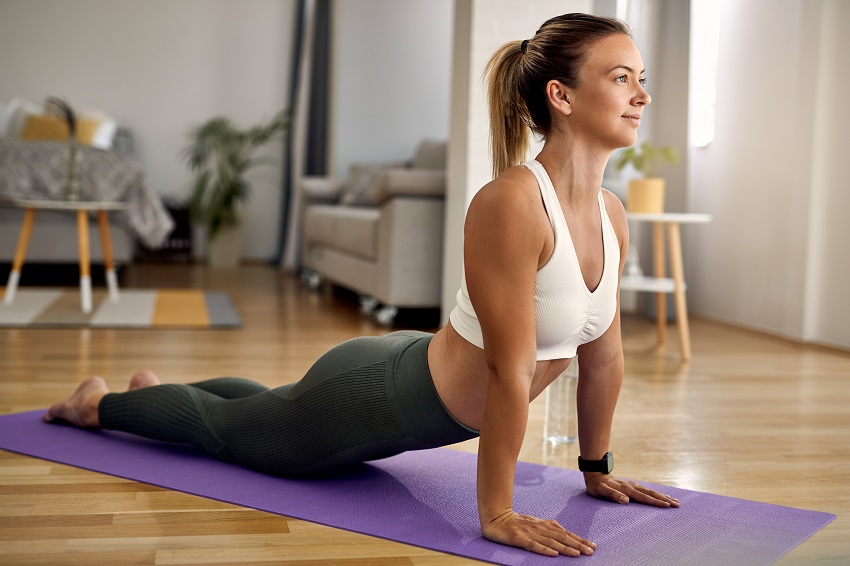
Steps:
- To perform Cobra pose, lie down on the mat in the prone position;
- Then, Bring your palms to the ground below your shoulders;
- Keep your elbows bent and close to your torso;
- Inhale and stretch your arms slightly to allow your chest to rise;
- Contract the buttocks to preserve the lower back.
Adho Mukha Savasana (Downward Facing Dog):
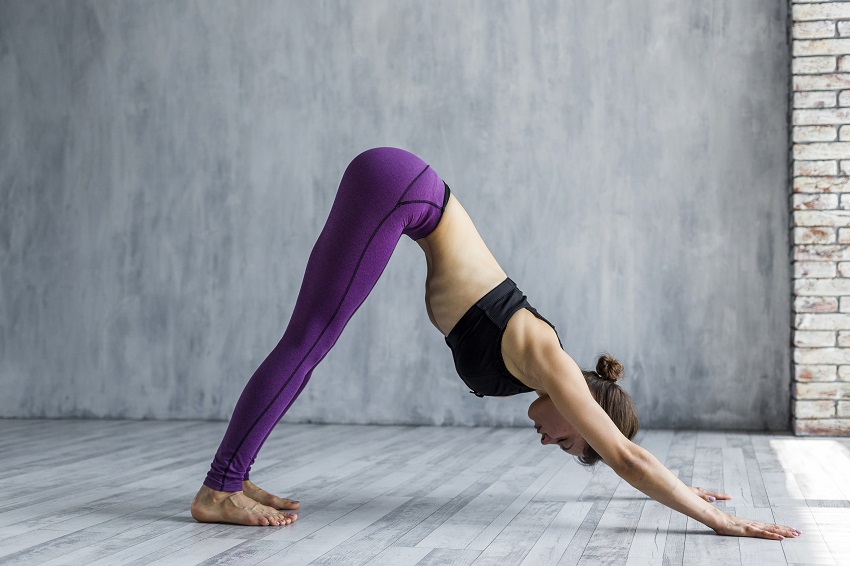
- To perform the exercise correctly, start on your hands and knees on a mat;
- Then, extend your arms above your shoulders, and position your feet so that they are slightly detached from each other, behind;
- From this position, you need to form an inverted V;
- Begin to press up threw your palms which should be near the top edge of the mat;
- Lift the pelvis/buttock toward the ceiling;
- Attempt to maintain your heels on the ground, legs straight.
Navasana (Boat Pose):
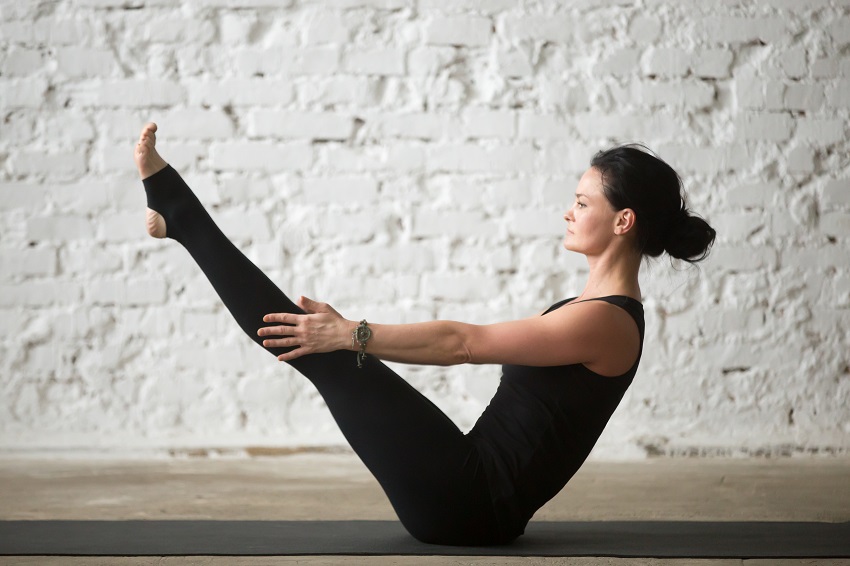
Steps:
- Begin from a seated position on the mat with your back straight;
- Then, bring your knees to your chest and place your feet on the ground;
- From here, tilt your back and raise your legs until they form a 45 ° angle with the floor;
- Lift your arms making sure they are parallel with the floor and bring them to the sides of your legs.
Navasana can be a challenging pose for those with a weak core. However, as your strength grows, so will the ability to complete the position for longer bouts of time. Your balance will also improve.
Utthita Trickonasana (Triangle Pose):
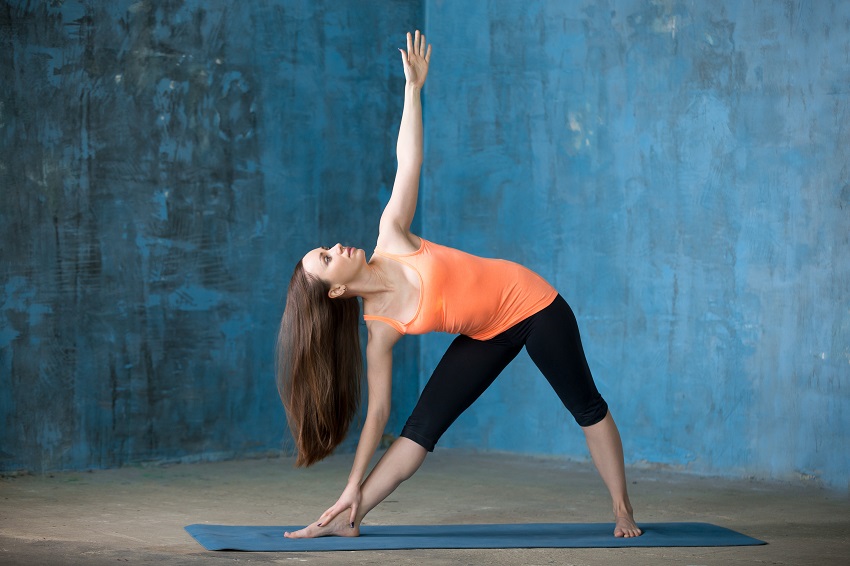
Steps:
- Begin the exercise standing. Keep the pelvis in front and spread the legs slightly, toes pointed in front;
- From here, rotate the right foot 90 ° outwards and turn the left one slightly inwards;
- Then, stretch your torso to the right while remaining perfectly in line with the pelvis and legs;
- Place your right hand on your ankle.
- Finally, extend the other arm upwards;
- Repeat the exercise on the other side.
- Vrksasana (Tree Pose):
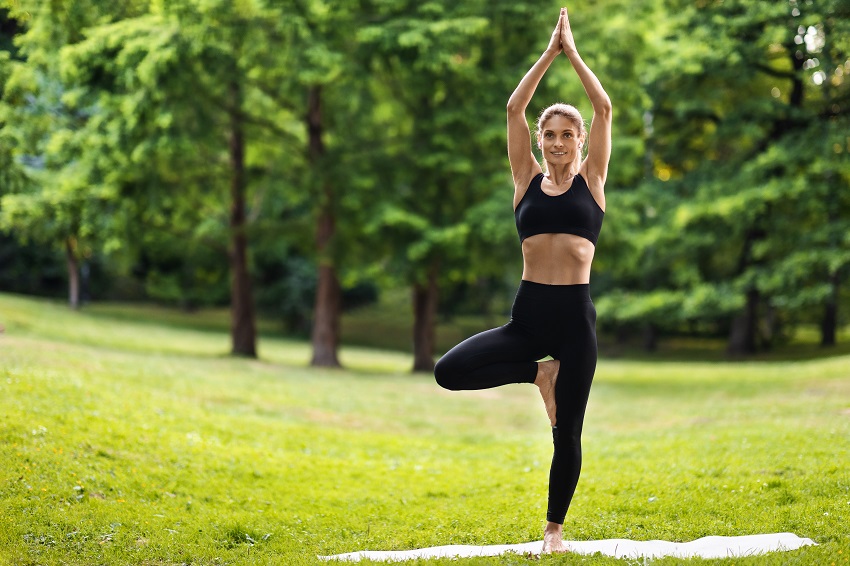
Steps:
- Tree pose is performed standing on your yoga mat;
- Lift one leg by bringing the sole of the foot to the level of the ankle or thigh;
- Place the sole of the foot on the opposing inner thigh;
- Join the palms together, and place either at chest height or over the head.
Vrksasana is also one of the positions of balance. It has a unique meaning. In fact, in this asana, the legs represent the trunk of the tree while the arms represent its branches.
Careful not to press the foot into the thigh as it could put presser on the knee joint.
Final Thoughts, Benefits For The Mind & Body:
Constantly practicing a discipline such as Hatha yoga, will ensure the practitioner the greatest of benefits. Thus, like anything you practice in life.
From a physical point of view, the body can improve from a flexibility, strength and balance perspective. Joints can become more pliable and healthy. Muscles can elongate and become less rigid. Thus, potentially helping decrease or avoid injury.
Pain is another ailment that you may find reduces. Specially, lower back pain which in several studies, has shown promise of decreasing from practicing the art of yoga, possibly from improvements made to posture and strength.
From a mental point of view, pranayama and meditative aspects of Hatha yoga, can bring about calm to the mind. You may develop a better ability to deal with stress. A better ability to deal with symptoms of certain ailments.
References:
- https://www.ncbi.nlm.nih.gov/pmc/articles/PMC3193654/
- https://www.headspace.com/meditation-101/what-is-meditation

